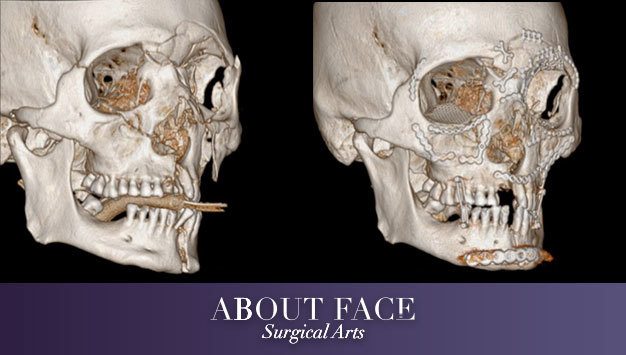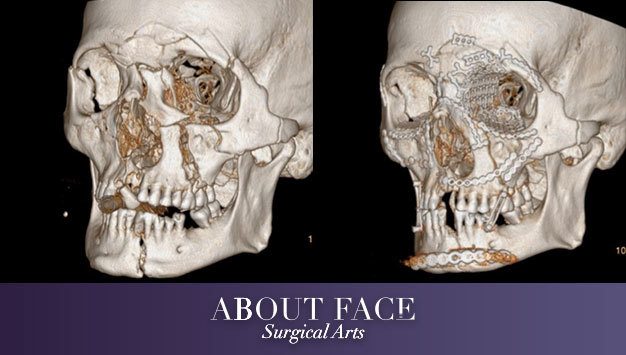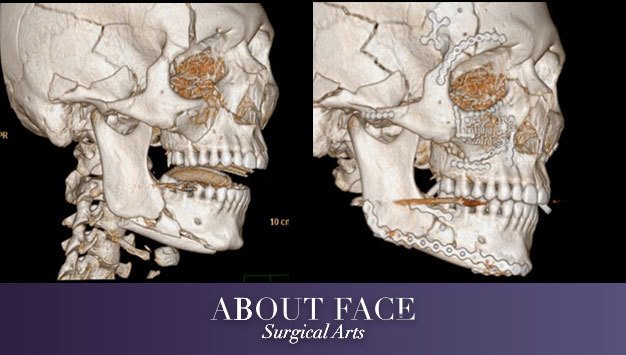Facial Trauma
Did you know that oral and maxillofacial surgeons (OMS), like Dr. Khan, have the most experience when it comes to treating facial injuries? This is why oral and maxillofacial surgeons are an essential part of hospital trauma teams. In fact, it was oral surgeons serving in combat hospitals that created many of the techniques that we use today in treating facial injuries.
Oral Surgery and the Treatment of Facial Injuries
Treating facial injuries is truly both science and art. Due to its complex structure and the critical importance of aesthetics, the skeletal structure of the face is very unique when compared to the rest of the body. Because the upper jawbone, the “maxilla”, also includes the nose and eye sockets, oral surgeons have an advantage when working with nearly all structures of the face thanks to a keen understanding of how these different features work together to create your unique look. Dr. Khan carefully considers all options when treating the injury to ensure the best possible aesthetic outcome.
This was an emergency appointment that I needed, and they were able to get me scheduled for surgery that same week after my consult visit. I was very impressed with the friendliness of the staff as well as Dr. Khan. The office is very clean and comfortable. After my surgery I received a handwritten card in the mail, which I thought was very kind. I appreciate the level of care and professionalism that Dr. Khan and his team showed me! Thanks so much!
Jenn B.
Common Causes of Maxillofacial Trauma
There are many culprits when it comes to facial trauma, however the usual suspects are:
- Sports injuries
- Car accidents
- Violence and fighting
- Falls
- Work-related accidents
Types of Facial Injuries
Because the oral and maxillofacial surgery residency includes emergency care and trauma in a hospital, we have seen many different cases. Some of the most common types of facial injuries:
Soft Tissue Injuries
Lacerations on the face and inside the mouth are treated with great concern for the cosmetic outcome of the injury post treatment. In addition, we are careful to take into consideration the positioning of nerves, glands and ducts to avoid medical complications.
Tooth Injuries
Teeth that have been knocked out (“avulsion”) can be saved if you act quickly. If your tooth gets knocked out, rinse (but don’t wipe) the tooth with cool water, and replace it in the socket, holding it there with gauze until you can access emergency care.
Broken Facial Bones
Because we cannot put a cast or a splint on the face, we must rely on other methods, such as screws and plates that secure fractured bones while they heal. Extremely careful consideration is taken to avoid (or hide) any scars on the soft tissue.
Fractured Jaws
Injury to the jaw is treated similarly, often with plates and screws and sometimes, if necessary, the “wiring of the jaw” to realign the bite properly if there are occlusal issues resulting from the injury.
Our Results




